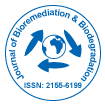Our Group organises 3000+ Global Events every year across USA, Europe & Asia with support from 1000 more scientific Societies and Publishes 700+ Open 91��ɫ Journals which contains over 50000 eminent personalities, reputed scientists as editorial board members.
Open 91��ɫ Journals gaining more Readers and Citations
700 Journals and 15,000,000 Readers Each Journal is getting 25,000+ Readers
Citations : 7718
Indexed In
- CAS Source Index (CASSI)
- Index Copernicus
- Google Scholar
- Sherpa Romeo
- Open J Gate
- Genamics JournalSeek
- Academic Keys
- JournalTOCs
- ResearchBible
- China National Knowledge Infrastructure (CNKI)
- Ulrich's Periodicals Directory
- 91��ɫ to Global Online Research in Agriculture (AGORA)
- RefSeek
- Hamdard University
- EBSCO A-Z
- OCLC- WorldCat
- SWB online catalog
- Publons
- Geneva Foundation for Medical Education and Research
- MIAR
- ICMJE
Useful Links
Recommended Journals
Related Subjects
Share This Page
In Association with
Assessment of bioplastic producing potential of Bacillus subtilis using some agro residues as carbon source
3rd International Conference and Exhibition on Biopolymers & Bioplastics
Abdullahi B Sallau and Bashir Salim
Ahmadu Bello University Nigeria
Posters & Accepted Abstracts: J Bioremed Biodeg
DOI:
Abstract
The assessment of bioplastic producing potential of Bacillus subtilis using a variety of pretreated agro-residues was carried out. The agro residues were rice husks, molasses, bagasse, and corn cobs. Acid, alkaline and oxidative pretreatment of the agro-residues were done using standard procedures. Bioplastics produced were extracted using chloroform precipitation and quantified spectrophotometer. Acid, base and peroxide concentrations in g/L of polyhydroxybutyrate (PHB) were obtained for rice husks 1.52�?±0.02, 1.82�?±0.01, and 1.70�?±0.01; molasses 1.82�?±0.01, 1.52�?±0.02, and 1.69�?±0.01; bagasse 0.87�?±0.06, 1.10�?±0.10, and 0.96�?±0.07 and; corn cobs 0.5�?±0.00, 0.77�?±0.06, and 0.60�?±0.10. The bioplastic yield of the agro-residues for acid, base and peroxide pretreatments were: rice husks 50.33�?±0.76, 53.69�?±2.23 and 53.29�?±0.15; molasses 54.94�?±0.14, 50.55�?±0.25 and 53.09�?±0.17%; bagasse 53.33�?±6.68, 55.00�?±0.25 and 54.50�?±7.12 and; corn cobs 51.85�?±3.21, 63.94�?±2.59 and 60.11�?±8.89. Statistical analysis revealed that PHB concentration of alkaline pretreated rice husk had a significant (p<0.05) higher value than other pretreatments. However, among all the agro-residues used peroxide pretreated corn cobs had a significantly (p<0.05) higher percentage yield of bioplastic (63.94�?±2.59).Biography
Email: sallauabdullahi@gmail.com
